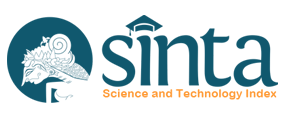ISLAMIC FINANCE-ECONOMIC GROWTH NEXUS IN BANGLADESH: AN ARDL APPROACH
Abstract
Keywords
Full Text:
PDFReferences
Abduh, Muhamad and Omar, Mohd Azmi, (November 25, 2010). ” Does Islamic Bank Promote Economic Growth and Poverty Reduction in Indonesia? An ARDL Bound Testing Approach”, Available at SSRN: http://ssrn.com/abstract=1716028
Ahmad, A.U.F., (2010). “Developments in Islamic Banking Practice: The Experience of Bangladesh”. Boca Raton, Florida. Ahmad, A. U. F., & Hassan, M. K. (2007). “Regulation and Performance of Islamic Banking in Bangladesh”. Thunderbird International Business Review, 49(2), 251-277.
Ahmed, Ausaf., (1995). “The Evolution of Islamic Banking”. In Encyclopedia of Islamic Banking and Insurance, Institute of Insurance, London. Ahmed, E., Rahman, Z., & Ahmed, R. I. (2006). Comparative analysis of loan recovery among nationalized, private, and Islamic commercial banks of Bangladesh. BRAC University Journal , III(1), 35
Al-Arafah Islami Bank Limited, http://www.al-arafahbank.com/glance.php accessed 24th March, 2011 Alam.M.N., “Islamic banking in Bangladesh: A case study of IBBL”. International Journal of Islamic Financial Services Vol. 1 No.4 Ali.A.J.M & Munawar. I., (2001), “Islamic Banking: Answers to Some Frequently Asked Questions”, Occasional Paper No. 4, 2001, Islamic Research and Training Institute, IDB Brooks,C.(2008) , “"Introductory Econometrics for Finance", 2nd Ed. The ICMA Centre, University of Reading Cambridge University Press Calderón, César and Liu, Lin. (2002), “The direction of causality between financial development and economic growth”, Working Paper No.184, Central Bank of Chile. Deidda, Luca and Fattouh, Bassam. (2002), “Non-linearity between finance and growth”, Economics Letters, Vol. 74, pp.339-345. Deogratias,D(2010); “Financial Development And Economic Growth: The Case Of Rwanda” Dolado . J. J, Gonzalo.J & Marmol.F (1999), “Cointegration”.
Fisman, Raymond and Love, Inessa. (2003), “Financial dependence and growth revisited”, NBER Working Paper, No. 9582. Furqani, Hafas and Mulyany, Ratna. (2009), “Islamic banking and economic growth: Empirical evidence from Malaysia”, Journal of Economic Cooperation and Development, Vol. 30 No. 2, pp.59-74.
Islami Bank Bangladesh Limited, http://www.islamibankbd.com/performance.php accessed 24th March, 2011.
http://www.bankersbd.com/bank-jobs/shahjalal-islami-bank-limited.html accessed 24th March, 2011.
http://www.eximbankbd.com/php/static/history_back.php accessed 24th March, 2011. Khan. N.S.M., Hassan.K.M., and Shahid.I.A., “Banking bevavior of Islamic Bank Customers in Bangladesh”. Majid, Shabri A. and Kassim, Salina. (2010), “Islamic finance and economic growth: The Malaysian experience”, Paper presented in Kuala Lumpur Islamic Finance Forum, Kuala Lumpur, 2-5 August 2010. Narayan, P. K. (2004), “Reformulating critical values for the bounds F-statistics approach to cointegration: An application to the tourism demand model for Fiji”,Discussion Papers, Department of Economics, Monash University, Australia. Rashid, M., and Nishat. A., (2009), “Disparity of Performance Indicators of Islamic Banks:Study on Bangladesh”. International Journal of Business and Management Vol. 4, No. 8 Rioja, Felix and Valev, Neven. (2002), “Finance and the sources of growth at various stages of economic development”, Working Paper 02-17, Andrew Young School of Policy Study, Georgia State University Saifullah. Md., (2010). Superiority of conventional banks & Islamic banks of Bangladesh: A comparative study. International Journal of Economics and Finance Vol. 2, No. 3 Sarkar, M.A.A., Islamic banking in Bangladesh: performance, problems & prospects. International Journal of Islamic Financial Services Vol. 1 No.3 Sukmana, Raditya and Kassim, Salina.(2010), “Roles of the Islamic banks in the monetary transmission process in Malaysia”, International Journal of Islamic and Middle Eastern Finance and Management Vol. 3 No. 1 pp. 7-19 Walter Sosa Escudero.S.W (2000), “A Primer on Unit-Roots and Cointegration”
DOI: https://doi.org/10.32507/ajei.v3i1.345
Refbacks
- There are currently no refbacks.
Copyright (c) 2018 Nazreen Tabssum Chowdhury, Muhamad Abduh
Indexed by:
© Copyright CC BY-SA Al-Infaq: Jurnal Ekonomi Islam, p-ISSN: 2087-2178, e-ISSN: 2579-6453 |






.png)